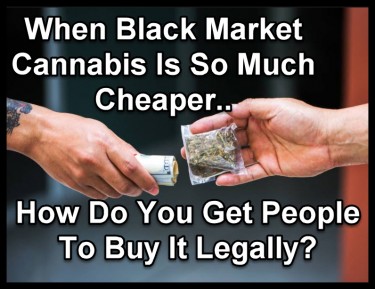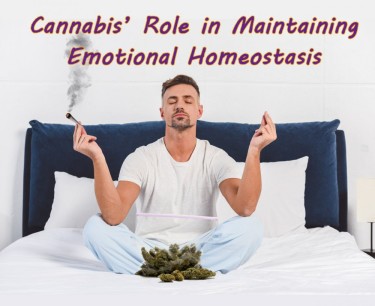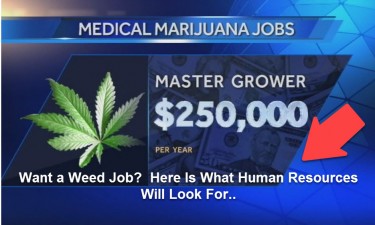Cannabis News
The Updated Guide to Buying Cannabis in a Legal Dispensary
Published
5 months agoon
By
admin

Over the past two decades, the cannabis industry has grown from a seedling into a towering redwood. What started as a whisper of “medical only” has blossomed into a full-throated roar of recreational legalization across much of the United States. As a long-time cannabis enthusiast and industry observer, I’ve watched in awe as this once-taboo plant has transformed into a multi-billion dollar juggernaut.
But with this explosive growth comes a dizzying array of new products, terms, and technologies that can leave even seasoned stoners scratching their heads. From dabs to distillates, terpenes to tinctures, the cannabis lexicon has expanded faster than my appetite after a hefty bong rip.
Even if you’re stuck in a prohibition state, chances are these new-fangled products are finding their way to your local dealers. So whether you’re a medical patient seeking relief, a casual toker looking to elevate your weekend, or just a curious cat wanting to understand what all the fuss is about, this guide is for you.
Consider this your Rosetta Stone for the modern dispensary experience. We’ll decode the jargon, demystify the products, and arm you with the knowledge to navigate this brave new world of weed. So sit back, relax, and let’s embark on a journey through the ever-expanding cannabis dispensary cosmos. Your perfect high awaits!
One of the biggest sources of confusion in the cannabis world is the distinction between hemp and cannabis. It’s like trying to tell the difference between identical twins – they look the same, smell the same, but boy oh boy, are they different!
Technically speaking, both hemp and cannabis are varieties of the Cannabis sativa plant. The main difference? It’s all about the THC content. Hemp is legally defined as cannabis plants containing 0.3% THC or less. Anything above that magical number? That’s what we call cannabis, or as your grandpappy might say, “marijuana.”
Now, don’t get it twisted – hemp isn’t just some boring, non-psychoactive plant. It’s the Swiss Army knife of the plant world! We’re talking textiles, building materials, food products, and even biofuel. Hemp is the overachiever of the cannabis family, always trying to save the world while cannabis is out there getting people baked.
Speaking of “marijuana,” let’s address the elephant in the room. That term? It’s about as outdated as your dad’s bell-bottom jeans. It was popularized during the Reefer Madness era by charming fellows like newspaper tycoon Randolph Hearst and America’s first drug czar, Harry Anslinger. These delightful chaps used the Spanish-sounding word to stir up anti-immigrant sentiment and demonize cannabis. This is one of the rabbit holes that you go down where you realize just how corrupt everything can be.
Now, here’s where it gets interesting. While most hemp products won’t get you high, some crafty folks have found loopholes in the law to create psychoactive products from hemp. We’re talking Delta-8 THC, HHC, and other alphabet soup cannabinoids that’ll make your head spin – both figuratively and literally.
Now that we’ve got that out of the way, let’s move onto the next segments.
Ah, the classic cannabis flower – the OG of the marijuana world. This is what most people picture when they think of weed: those sticky, fragrant buds that look like little green Christmas trees.
Flower is the smokable part of the female cannabis plant, harvested and cured to perfection. It’s versatile as hell – you can smoke it in a joint, pack it in a bowl, or vaporize it if you’re feeling fancy. Each strain of flower has its own unique profile of cannabinoids and terpenes, giving it distinct effects and flavors.
From the pine-scented Blue Dream to the fruity Pineapple Express, there’s a flower out there for every palate and preference. Just remember, like a fine wine, quality matters – so don’t cheap out on the schwag! But if there’s only schwag available, buy it, take it’s seeds, and start growing your own.
Cannabinoids are the chemical compounds in cannabis that make you feel “groovy, man.” Think of them as the secret sauce of the plant. THC and CBD are the rockstars of the cannabinoid world, but there are over 100 of these bad boys in cannabis.
They interact with our body’s endocannabinoid system, affecting everything from mood and pain perception to appetite and sleep. Some, like THC, are psychoactive (hello, high!), while others, like CBD, are non-intoxicating but still therapeutic. It’s like nature’s pharmacy, with each cannabinoid playing a different role. CBN might help you sleep, CBG could fight inflammation, and THCV might curb your munchies.
The interplay between these compounds creates what’s known as the “entourage effect” – proving that sometimes, the whole is greater than the sum of its parts.
Delta-9 THC is the celebrity of the cannabis world, the main event, the reason most folks show up to the party. This psychoactive compound is responsible for that classic “high” feeling – you know, when everything’s hilarious and a bag of chips becomes a gourmet meal.
It works by binding to cannabinoid receptors in your brain, altering your perception, mood, and cognitive function. But it’s not all giggles and munchies – Delta-9 THC can also help with pain relief, nausea, and appetite stimulation, making it valuable for medical users too. Just remember, like that friend who always takes things too far, a little Delta-9 goes a long way. Start low and go slow, unless you want to become one with your couch for the next few hours.
Alright, let’s tackle the great Indica vs. Sativa debate. Technically speaking, this classification is about as scientifically accurate as your horoscope. Modern cannabis is so crossbred that pure Indicas or Sativas are rarer than a unicorn riding a rainbow.
However, these terms are still widely used to describe the effects of different strains. Indicas are generally associated with a body-focused high – think couch-lock, munchies, and a nice, sleepy vibe. Perfect for Netflix and chill.
Sativas are usually described as more energizing and cerebral – great for creative pursuits or socializing. Hybrids? They’re the best of both worlds, combining traits from both in various ratios. Just remember, your mileage may vary – one person’s “energizing” Sativa might send another straight to dreamland. It’s all about finding what works for you.
Concentrates and extracts are like cannabis on steroids – all the good stuff, concentrated down into a potent little package. These products are made by extracting cannabinoids and terpenes from the plant material, resulting in a much higher concentration of the active compounds. We’re talking up to 90% THC in some cases – not for the faint of heart!
There’s a whole world of concentrates out there: shatter, wax, budder, crumble, live resin, rosin… each with its own consistency and method of production. Some are extracted using solvents like butane or CO2, while others are made using heat and pressure. They can be dabbed, vaporized, or added to flower for an extra kick.
Just remember, with great power comes great responsibility – start small with concentrates, or you might find yourself having a very intense conversation with your houseplants.
Dabs are the Mike Tyson’s of the cannabis world – concentrated doses of cannabis that pack a serious punch. We’re talking a single hit that could put you on your ass faster than you can say “pass the torch.”
Dabbing involves vaporizing a small amount of concentrate on a hot surface and inhaling the resulting vapor. It’s like the espresso shot of weed – intense, fast-acting, and not for the people who aren’t experienced with weed. While dabs can be great for experienced users or medical patients needing quick relief, they shouldn’t become your go-to method.
If you’re waking and baking with dabs every morning, it might be time to reassess your relationship with Mary Jane. Treat dabs like the cherry on top of your cannabis sundae – a special treat, not the main course. Remember, kids: with great power comes great responsibility (and potentially a very intense couch-lock or green out.)
Terpenes and flavonoids are the unsung heroes of the cannabis world, the Beyoncé’s backup dancers of weed, if you will.
Terpenes are aromatic compounds that give cannabis its distinct smell and flavor. That skunky odor? Terpenes. That citrusy taste? Terpenes again. But they’re not just about smell and taste – terpenes also play a role in the effects of cannabis, contributing to the entourage effect.
Myrcene might make you sleepy, while limonene could perk you up. Flavonoids, on the other hand, are phytonutrients that contribute to the color and flavor of cannabis. They also have potential health benefits, like anti-inflammatory properties. Together, terpenes and flavonoids create the unique personality of each cannabis strain. It’s like nature’s own essential oil diffuser, but way more fun.
Distillates are the pure, uncut diamonds of the cannabis world. These highly refined extracts are produced through a process of… well, distillation (shocking, I know). The result? A clear, potent liquid that can contain up to 99% pure cannabinoids.
It’s like the Everclear of weed – flavorless, odorless, and guaranteed to knock your socks off if you’re not careful. Distillates are incredibly versatile. You can dab them, vape them, or use them to make edibles. They’re popular in vape cartridges because they’re smooth and don’t clog up the hardware. The downside? In the process of creating such a pure product, you lose most of the terpenes and other compounds that contribute to the entourage effect. It’s a bit like listening to a song with only the vocals – you get the main event, but you might miss the richness of the full band.
Live resin is the fresh-squeezed orange juice of the cannabis world – capturing all the vibrant flavors and aromas of the living plant. Unlike other concentrates that use dried and cured buds, live resin is made from fresh-frozen cannabis plants. This preserves a higher percentage of terpenes, resulting in a more flavorful and aromatic product.
It’s like the difference between dried herbs and fresh ones – sure, they’re both basil, but one’s got a lot more oomph.
Live resin tends to have a saucy, glossy appearance and a more complex flavor profile than other concentrates. It’s popular among cannabis connoisseurs for its full-spectrum effects and rich terpene content. If you’re looking to really taste your weed, live resin is the way to go. Just be prepared for a hefty price tag – all that flavor doesn’t come cheap!
Rosin is the DIY champion of cannabis concentrates – no fancy lab equipment or solvents required. This golden, sappy extract is made by applying heat and pressure to cannabis flower, hash, or kief. It’s like giving your weed a really intense hug until it sweats out all the good stuff. The result is a clean, full-spectrum concentrate that retains the plant’s original terpene profile.
Rosin has gained popularity for its purity and simplicity – there’s no risk of residual solvents because, well, there are no solvents. It’s so simple to make that some folks press their own rosin at home (though I wouldn’t recommend trying this without proper equipment, unless you want to turn your hair straightener into a very expensive paperweight). Rosin can be dabbed, vaporized, or even added to joints for an extra kick. It’s like the artisanal, small-batch craft beer of the cannabis world – pure, potent, and full of flavor.
A budtender is like the sommelier of the cannabis world, but way cooler and probably with more tattoos.
These knowledgeable folks are the front-line workers in dispensaries, guiding customers through the often overwhelming world of weed. Need something to help you sleep? They’ve got you covered. Looking for a strain that won’t make you paranoid at parties? They can recommend just the thing.
A good budtender is part educator, part salesperson, and part therapist – they’re there to answer your questions, offer recommendations, and sometimes just listen to you ramble about that weird dream you had last night. They’re the backbone of a good dispensary, making sure you don’t accidentally buy a super-potent sativa when you’re looking for something to chill you out. Just remember, not everything they say should be taken as medical advice. They know more about weed than you (probably), but that doesn’t make them the ultimate authority on it. They are trying to sell you weed after all!
Welcome to the wacky world of weed weights, where an eighth isn’t always an eighth and a dime bag doesn’t cost a dime anymore.
An ounce (oz) is the gold standard in cannabis measurements – about 28 grams, or enough to keep you happily baked for… well, that depends on how much you smoke, doesn’t it?
From there, we break it down into fractions: a quarter (7g), an eighth (3.5g), and so on. Some states get fancy with tenths (2.83g) and fifths (5.66g) of an ounce. Then there’s the metric system chiming in with grams and milligrams for concentrates and edibles.
It’s like a high school math problem come to life. Just remember, a pound of weed doesn’t weigh the same as a pound of feathers – because weed is way more fun to smoke. And always double-check your dispensary receipt – math is hard enough when you’re sober!
Pre-rolls are the fast food of the cannabis world – convenient, readily available, and perfect when you’re too lazy (or too high) to roll your own. These pre-rolled joints come in a variety of sizes and strains, from single-serving pinners to party-sized king cones.
They’re great for beginners who haven’t mastered the art of rolling, or for anyone who values convenience over craftsmanship. Some are just pure flower, while others might be infused with concentrates or rolled in kief for an extra kick.
But buyer beware – not all pre-rolls are created equal.
Some less reputable dispensaries might use lower quality shake or trim to fill their joints. It’s like getting a mystery meat hot dog – it’ll do the job, but you might not want to know what’s inside.
When in doubt, ask your budtender about the quality of their pre-rolls. And remember, just because it’s pre-rolled doesn’t mean you have to smoke the whole thing at once!
Ah, the classic debate: blunts vs joints. It’s like the Rolling Stones vs the Beatles but for weed.
Joints are the OG – cannabis rolled in thin paper, often with a filter or “crutch” at one end. They’re simple, classic, and let the flavor of the weed shine through. Blunts, on the other hand, are cannabis wrapped in tobacco leaf or a tobacco-based paper. They’re bigger, burn slower, and add a nicotine buzz to your high.
Blunts are like the party animal cousin of the more laid-back joint. Some folks swear by the flavor combination of weed and tobacco, while others prefer to keep their cannabis pure. Rolling either one is considered an art form in certain circles – there’s nothing quite like the satisfaction of rolling a perfect cone.
Whether you prefer joints or blunts often comes down to personal preference. Just remember, if you’re smoking blunts, you’re also consuming tobacco – something to keep in mind if you’re trying to avoid nicotine.
Welcome to the hardware store of getting high! Bongs, bubblers, and pipes are the tools of the trade for many cannabis enthusiasts. Bongs, also known as water pipes, filter smoke through water for a smoother hit. They come in all shapes and sizes, from simple beakers to elaborate multi-chamber monstrosities that look like they belong in a mad scientist’s lab.
Bubblers are like the love child of a bong and a pipe – portable like a pipe, but with water filtration like a bong. They’re perfect for when you want a smoother hit on the go.
Pipes are the simple, no-frills option – just pack, light, and puff. They’re portable, easy to use, and come in countless designs, from basic spoons to intricate glass art pieces. Each method has its pros and cons – bongs give smoother hits but are less portable, pipes are convenient but harsher, and bubblers try to strike a balance. It’s like choosing between a sports car, an SUV, or a motorcycle – they’ll all get you where you’re going, just in different styles.
Welcome to the wild west of cannabis chemistry! These compounds are like THC’s quirky cousins – similar, but with their own unique personalities.
Delta-8 and Delta-10 THC are isomers of our good friend Delta-9, offering a milder high with potentially fewer side effects.
HHC (Hexahydrocannabinol) is a hydrogenated form of THC, while THCP is a naturally occurring cannabinoid that’s supposedly 30 times more potent than Delta-9.
These compounds often exist in a legal grey area – they can be derived from federally legal hemp, making them technically legal in some places where cannabis isn’t. But here’s the kicker: many of these products are synthesized in labs, not extracted directly from plants. This means less regulatory oversight and potentially more health risks. It’s like the difference between homemade moonshine and store-bought whiskey – one might get you buzzed, but the other might make you go blind. While these cannabinoids offer interesting possibilities, approach with caution and always buy from reputable sources.
Charas is the OG of cannabis concentrates, the granddaddy of hash. This hand-made concentrate comes from the Indian subcontinent and has been used for thousands of years. Unlike other concentrates, charas is made from live cannabis plants.
Makers literally rub the sticky, resin-covered buds between their hands until the resin builds up into a dark, malleable ball. It’s like the Play-Doh, but way more fun for adults. The result is a full-spectrum concentrate that retains all the plant’s terpenes and cannabinoids. Charas is typically smoked in a chillum or mixed with tobacco in a joint. It’s not as potent as modern concentrates, but it makes up for it in flavor and tradition.
Finding real charas outside of its native regions is rare, but if you ever get the chance to try it, you’ll be partaking in a piece of cannabis history. Just be prepared for some seriously sticky fingers! You could always just make your own as well, but you’ll need a lot of plants.
Grinders are a stoner’s essential if they partake in flower. These trusty sidekicks make your smoking experience so much better. These nifty devices break down your bud into a more consistent texture, making for an even burn in joints or bowls.
A good grinder can make your weed go further and hit smoother. Most grinders have multiple chambers – the top for grinding, a middle chamber for catching the ground herb, and often a bottom chamber for collecting kief (those precious, potent trichomes that fall off during grinding). They come in all materials, from basic plastic to fancy titanium, and in sizes ranging from tiny pocket grinders to electric ones that can handle industrial quantities. Some even have fancy features like clear tops or built-in rolling trays. Using a grinder versus breaking up weed with your fingers is like the difference between chopped herbs and torn leaves in cooking – it just works better.
Plus, you get to collect kief, which is like finding bonus nuggets at the bottom of your McDonald’s bag.
Welcome to the high-tech world of cannabis consumption! Vapes come in more flavors than a Baskin Robbins, each with its own pros and cons. Cartridges (carts) are pre-filled with cannabis oil and attach to a battery. They’re discreet and convenient, but quality can vary wildly – some are pure distillate, others have added terpenes or even sketchy cutting agents.
Flower vaporizers heat dry herb without combustion, giving you the full spectrum of plant compounds without the smoke. They’re like the vinyl records of vapes – purists swear by them. Concentrate vaporizers are for dabs on the go, handling waxes and shatters with ease. They’re potent but can be messy – not ideal for your white pants. Vape pens are the all-in-one solution, often disposable. They’re perfect for beginners or stealth tokers, but not always the most cost-effective or environmentally friendly option. Choose your vape adventure wisely!
Kief is like the fairy dust of the cannabis world – a magical powder that can elevate your high to new dimensions. It’s made up of the trichomes that fall off your bud during handling or grinding.
These tiny crystals are packed with cannabinoids and terpenes, making kief significantly more potent than regular flower. Collecting kief is like saving up for a rainy day – a little patience yields a powerful reward. Many grinders have a special chamber to catch this precious powder. Kief can be sprinkled on top of bowls or joints for an extra kick (known as “crowning”), pressed into hash, or used to make potent edibles.
Some folks even dab it, though that can be a bit harsh. The best part? It’s essentially a free bonus that comes with your weed. It’s like finding an onion ring in your fries – a delightful surprise that makes everything better. Just remember, a little goes a long way – kief is not for the faint of heart!
Rolling papers are another stoner essential, the thin vessels that cradle your precious herb. These delicate sheets come in a dizzying array of options – from classic wood pulp to hemp, rice, and even gold-plated papers for when you’re feeling fancy.
Size matters too, from single-wide for personal joints to king-size for sharing (or not, we don’t judge). Then there’s thickness – thin papers burn faster and let you taste more of the weed, while thicker ones are easier to roll but might harsh your flavor. Some papers come with tips or filters built-in, perfect for butterfingers who struggle with crutches. Flavored papers can add a twist to your smoke, but purists might cry sacrilege
. Ultimately, choosing rolling papers is like picking a wine glass – it’s all about personal preference and what enhances your experience. Just remember, no matter how pretty the paper, it’s what’s inside that counts!
Well, folks, we’ve blazed through a forest of cannabis terminology faster than Snoop Dogg at a free joint giveaway. From the basics of flower to the high-tech world of vapes, we’ve covered more ground than a seasoned budtender on a busy Friday night. But here’s the million-dollar question: did I miss anything?
Cannabis is a rapidly evolving field, with new products, methods, and terms popping up faster than you can say “puff, puff, pass.” So, while I’ve done my best to cover the essentials, there’s always a chance some newfangled cannabis contraption or term has slipped through the cracks. That’s the beauty (and the challenge) of this industry – it’s always growing and changing, kind of like that plant you forgot about in the back of your closet.
Speaking of growth, consider this guide a living document. As the cannabis world continues to expand and innovate, I’ll be updating this guide faster than you can roll a joint. New terms, new products, new ways to get baked – I’ll be on it like white on rice (papers).
Now, here’s where you come in, my fellow cannabis enthusiasts. Has this guide helped you navigate the oft-confusing world of dispensaries?
Are you now confidently strutting into your local weed shop, throwing around terms like “live resin” and “terpene profile” like a pro? Or are you still scratching your head, wondering what the heck a “dab” is and why it sounds like something your grandma would disapprove of?
Drop me a line and let me know how this guide has affected your cannabis buying experience. After all, knowledge is power, and in this case, it might just lead to a more enjoyable, effective, and safe cannabis journey.
Stay lifted, my friends!
BUYING WEED LEGALLY, READ ON…
You may like
-


Exactly What Is A Muse
-


Marijuana Microdosing May Help Early Dating Nerves
-


RFK Jr. Does Champion Cannabis
-


Emotional Regulation Get Easier with Cannabis?
-


Ohio recreational marijuana market already showing signs of price contraction
-


ABC (Australia News) Victorian men jailed over attempted ‘astronomical’ cocaine import into South Australia
Cannabis News
Emotional Regulation Get Easier with Cannabis?
Published
11 hours agoon
January 30, 2025By
admin

Emotional regulation refers to an individual’s ability to manage to various emotional stimuli in an appropriate manner.
When one is able to regulate their emotions, it means that they are able to withhold intense and extreme emotions, even when the situation normally calls for it. As a result, they are able to express their emotions in a proper way; it is controlled but not suppressed, it’s mindful and aware. Effective emotional regulation has been linked to emotional maturity, better relationships, and an improvement in overall well-being.
However, using certain drugs as well as alcohol have proven to negatively impact one’s ability to regulate their emotions. This is because drugs engage with the neurotransmitters in the brain, including those responsible for the production of serotonin and dopamine, which are necessary for healthy emotional regulation. When we consume central nervous system depressants such as alcohol, as well as stimulants in drugs, these severely impede our serotonin levels which can cause depression and other mental health issues. In addition, drugs have been found to affect emotional dysregulation and dependence.
But not cannabis.
According to the results of a clinical study conducted by researchers at the Oregon State University and Washington State University, inhaling weed containing over 20% THC was not found to have any impact on emotional regulation.
For the study, investigators analyzed the effects of weed smoking on 12 adults; all the participants already had experience smoking weed in the past and even used their own cannabis supply. The researchers then analyzed the mood and emotional regulation capabilities of the participants during times of sobriety as well as when they were stoned from weed. Surprisingly, they found that the subjects’ performance didn’t differ when made to undergo several tasks after smoking weed.
“There was no evidence that acute high-potency cannabis use affected participants’ implicit or explicit emotional regulation,” they said. The researchers also noted that the participants acknowledged there was an improvement in their mood and anxiety reduction after using weed.
“The current pilot study assessed whether being under the influence of high-potency cannabis flower affects emotion regulation among a sample of young adults who use cannabis regularly,” they concluded. “While participants reported more positive mood and decreases in anxiety while intoxicated, there was no evidence to suggest that intoxication from high-potency cannabis flower affected emotion regulation,” the researchers wrote.
How Else Can Cannabis Benefit Emotional Health?
Thousands of people rely on cannabis for its benefits on their emotional and mental well-being. In fact, most cannabis consumers have a positive association with cannabis and emotions, since it can effectively help them reduce encounters of negative emotions in general. For example, instead of ruminating in stress and worry, people can medicate with weed at the end of the day. This not only aids in relaxation, but also offers a natural, safe outlet for coping with the stresses of everyday life.
In the same vein, this is also why more individuals, particularly those in high-stress positions such as parents, CEO’s, and entrepreneurs, have made microdosing or getting high a part of their daily life. No longer is alcohol seen as the only way to cope: weed is in, and it’s a much healthier way of dealing with life.
While this may be something that science can’t explain just yet, cannabis does have the unique ability to slow down one’s racing thoughts and the endless mental chatter, while helping make it easier to focus on the present. For this reason and more, weed has already been widely integrated into many wellness retreats in legal cities. Weed, mindfulness, and yoga simply go together so well, enhancing the peaceful effects of one another. Cannabis consumers can also enjoy a great deal of relaxing activities with a heightened sense of enjoyment, effectively helping one forget about their negative emotions such as anger, stress, and frustration.
So the next time you’re feeling extremely irritable or pissed off, why not pop a gummy or have a toke, and spend some time outside. You’ll see how difficult it can be to stay mad.
What You Take Matters
For those who want to use cannabis to improve their emotional regulation, what you take – and how much of it – matters just as much too.
That’s why there are many more studies suggesting that low-dose THC is best especially for anxiety and stress. On the other hand, high doses of THC can be detrimental for your mental and emotional well-being.
According to a 2017 study conducted by researchers at the University of Illinois at Chicago and the University of Chicago: “We found that THC at low doses reduced stress, while higher doses had the opposite effect, underscoring the importance of dose when it comes to THC and its effects,” they said. The same is also true for psychedelics, which can partly explain the popularity of microdosing psychedelics. Meanwhile, anything that can you too high can in fact, cause intense anxiety and stress.
Conclusion
It can feel almost impossible to avoid stressful situations that can cause you to feel out of whack, emotionally. In fact, stress is just a normal part of life. But losing your temper, ruminating in negative emotions for hours, and being so upset that it affects other aspects of your life, is not normal.
That said, there are a variety of ways you can deal with stress and the negative emotions it brings. Cannabis can be a key ingredient for helping you restore balance in your emotions as well as mental health.
CANNABIS AND EMOTIONAL HOMEOSTATIS, READ ON…
CANNABIS FOR EMOTIONAL HOMESTATIS – WHAT WE NOW KNOW!
Cannabis News
Is There Any Green Left in the Green Rush?
Published
1 day agoon
January 29, 2025By
admin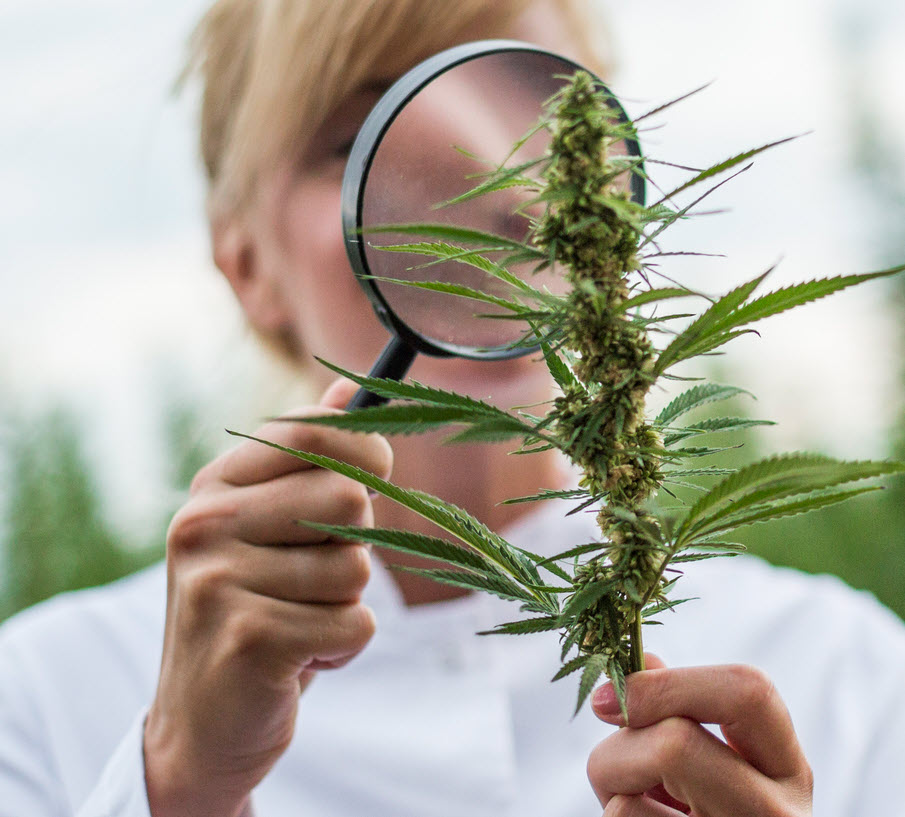
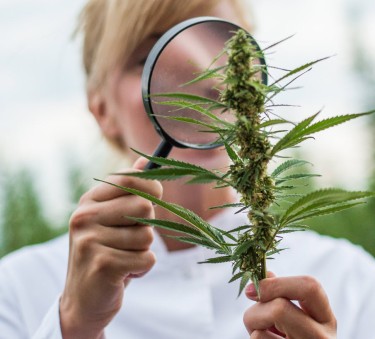
The cannabis industry has undergone a remarkable transformation over the past decade, evolving from a largely underground market to a legitimate and booming sector. As more states and countries legalize cannabis for medical and recreational use, the demand for skilled professionals has surged. This growth has led to the emergence of various high-paying cannabis job opportunities that cater to a wide range of expertise. In this article, we will explore some of the highest-paying jobs in the cannabis industry, their roles, responsibilities, and the skills required to excel in these positions.
The Cannabis Industry Landscape
Before diving into specific job roles, it’s essential to understand the current landscape of the cannabis industry. As of 2023, the global cannabis market is projected to reach over $70 billion by 2028, driven by increasing legalization, changing consumer attitudes, and growing acceptance of cannabis for both medicinal and recreational purposes. This rapid growth has created a demand and jobs for professionals across various sectors, including cultivation, retail, manufacturing, marketing, and compliance.
Factors Driving Job Growth
1. Legalization: As more regions legalize cannabis, new businesses are emerging, creating job opportunities across the supply chain.
2. Consumer Demand: The growing acceptance of cannabis products has led to increased consumer demand for quality products and services.
3. Innovation: The industry is witnessing continuous innovation in product development and technology, necessitating skilled professionals to drive these advancements.
4. Regulatory Compliance: Navigating complex regulations requires experts who can ensure compliance with local and federal laws.
With this backdrop in mind, let’s delve into some of the highest-paying jobs within the cannabis industry.
1. Chief Financial Officer (CFO)
The Chief Financial Officer (CFO) plays a critical role in any organization, and this is especially true in the cannabis industry. As companies navigate a complex financial landscape marked by fluctuating regulations and banking challenges, a skilled CFO is essential for guiding financial strategy.
Responsibilities
-
Financial Planning: Developing long-term financial strategies that align with company goals.
-
Budget Management: Overseeing budgets and ensuring efficient allocation of resources.
-
Regulatory Compliance: Ensuring adherence to financial regulations specific to the cannabis industry.
-
Investor Relations: Managing relationships with investors and stakeholders.
Salary Range
CFOs in the cannabis industry can expect to earn between $125,000 and $250,000 annually, depending on the size of the company and its location.
Skills Required
-
Strong analytical skills
-
Experience in financial management
-
Knowledge of cannabis regulations
-
Excellent communication skills
2. Chief Operations Officer (COO)
The Chief Operations Officer (COO) is responsible for overseeing daily operations within a cannabis company. This role is crucial for ensuring that all aspects of the business run smoothly and efficiently.
Responsibilities
-
Operational Strategy: Developing strategies to improve operational efficiency.
-
Team Management: Leading various departments such as cultivation, production, and sales.
-
Process Optimization: Implementing best practices for production and distribution.
-
Quality Control: Ensuring that products meet regulatory standards and quality expectations.
Salary Range
COOs typically earn between $125,000 and $200,000 annually.
Skills Required
-
Strong leadership abilities
-
Experience in operations management
-
Knowledge of supply chain logistics
-
Problem-solving skills
3. Vice President of Cultivation
The Vice President of Cultivation oversees all aspects of growing cannabis plants from seed to harvest. This role requires extensive knowledge of horticulture as well as business acumen.
Responsibilities
-
Cultivation Management: Directing cultivation operations to maximize yield and quality.
-
Research & Development: Staying updated on new cultivation techniques and technologies.
-
Staff Training: Training staff on best practices for plant care.
-
Compliance Oversight: Ensuring that cultivation practices adhere to state regulations.
Salary Range
This position typically commands a salary between $140,000 and $185,000 annually.
Skills Required
4. Cannabis Consultant
Cannabis consultants provide expert advice on various aspects of running a cannabis business. They often work with startups or established companies looking to optimize their operations or navigate regulatory challenges.
Responsibilities
-
Regulatory Guidance: Helping businesses understand local and federal regulations.
-
Business Strategy: Advising on market entry strategies or operational improvements.
-
Training Programs: Developing training programs for staff on compliance issues.
-
Market Analysis: Conducting research on market trends and consumer preferences.
Salary Range
Cannabis consultants can earn anywhere from $100,000 to over $250,000, depending on their expertise and client base.
Skills Required
5. Dispensary Manager
Dispensary managers oversee the daily operations of retail locations selling cannabis products. This role combines customer service with business management skills.
Responsibilities
-
Staff Management: Hiring, training, and supervising dispensary staff.
-
Inventory Control: Managing inventory levels to ensure product availability.
-
Customer Service: Ensuring high levels of customer satisfaction through excellent service.
-
Sales Strategy: Developing sales strategies to increase revenue.
Salary Range
Dispensary managers typically earn between $60,000 and $120,000, depending on location and experience.
Skills Required
-
Strong leadership qualities
-
Experience in retail management
-
Knowledge of cannabis products
-
Excellent interpersonal skills
6. Extraction Technician
Extraction technicians play a vital role in producing concentrated cannabis products such as oils and edibles. This position requires technical expertise in extraction methods.
Responsibilities
-
Extraction Processes: Performing extraction using various techniques (e.g., CO2 extraction).
-
Equipment Maintenance: Maintaining extraction equipment to ensure safety and efficiency.
-
Quality Assurance: Testing products for potency and purity.
-
Documentation: Keeping detailed records of extraction processes for compliance purposes.
Salary Range
Extraction technicians can earn between $50,000 and $90,000, depending on their level of experience.
Skills Required
-
Technical knowledge of extraction methods
-
Attention to detai Ability to work with laboratory equipment
-
Strong problem-solving skills
7. Marketing Manager
Marketing managers in the cannabis industry are responsible for developing marketing strategies that promote products while adhering to strict advertising regulations unique to this sector.
Responsibilities
-
Brand Development: Creating a strong brand identity that resonates with consumers.
-
Campaign Management: Planning and executing marketing campaigns across various channels.
-
Market Research: Analyzing market trends to identify opportunities for growth.
-
Social Media Management: Engaging with customers through social media platforms while complying with advertising regulations.
Salary Range
Marketing managers can expect salaries ranging from $70,000 to $150,000, depending on experience and company size.
Skills Required
-
Strong understanding of digital marketing
-
Creativity
-
Excellent communication skills
-
Ability to analyze market data
8. Compliance Officer
Compliance officers ensure that cannabis businesses adhere to all local, state, and federal regulations governing their operations. This role is crucial for avoiding legal issues that could jeopardize a business’s future.
Responsibilities
-
Regulatory Monitoring: Keeping up-to-date with changes in laws affecting the cannabis industry.
-
Policy Development: Creating internal policies that align with legal requirements.
-
Training Staff: Educating employees about compliance issues related to their roles.
-
Auditing Practices: Conducting regular audits to ensure adherence to regulations.
Salary Range
Compliance officers typically earn between $70,000 and $120,000, depending on experience level.
Skills Required
9. Product Development Scientist
Product development scientists are responsible for creating new cannabis products or improving existing ones. Their work involves research into formulations that meet consumer needs while adhering to safety standards.
Responsibilities
-
Researching new product formulations
-
Conducting stability testing
-
Collaborating with marketing teams
-
Ensuring compliance with health regulations
Salary Range
Product development scientists can earn between $80,000 and $130,000, depending on their expertise level.
Skills Required
-
Strong background in chemistry or biology
-
Creativity
-
Problem-solving abilities
-
Knowledge of regulatory standards
Check for open jobs in the cannabis industry near you on our job board by clicking here!
Conclusion
The cannabis industry presents an array of high-paying job opportunities across various sectors—from finance and operations management to marketing and compliance. As legalization continues to spread globally, skilled professionals will be essential for navigating this rapidly evolving landscape. Whether you’re an experienced professional looking for a career change or someone entering the job market for the first time, there are numerous pathways available within this exciting field. By acquiring relevant skills and knowledge about the industry’s unique challenges and opportunities, you can position yourself for success in one of today’s most dynamic job markets.
HIGHEST PAYING JOBS IN WEED, READ ON…
Cannabis News
Not Just Alcohol Sales Dropping, Anxiety Medication Prescriptions Plummet in States with Legal Cannabis Programs
Published
3 days agoon
January 28, 2025By
admin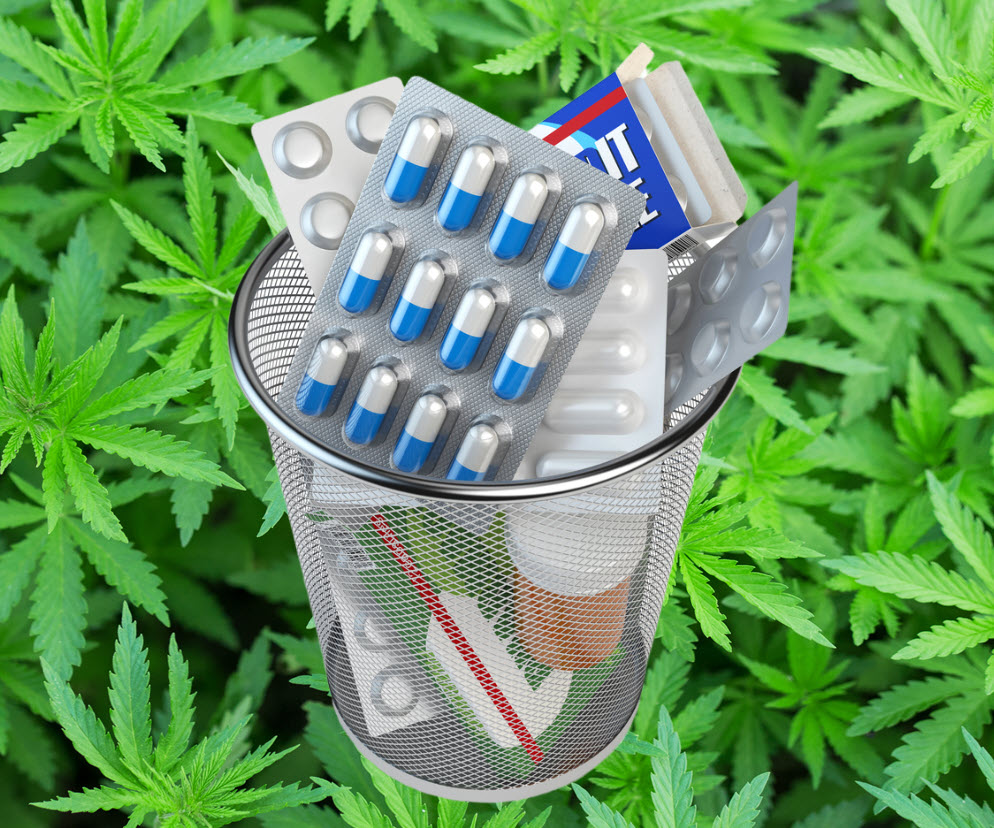
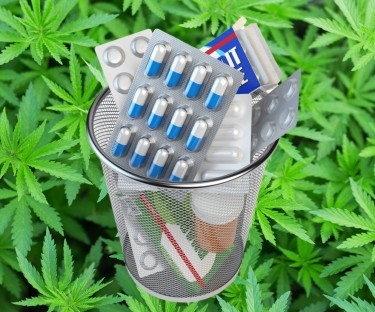
The legalization of marijuana has sparked a significant shift in the landscape of mental health treatment, particularly concerning anxiety disorders. Recent studies have indicated a notable decrease in prescriptions for anti-anxiety medications, especially benzodiazepines, in states where marijuana has been legalized. This phenomenon raises important questions about the implications for pharmaceutical companies that have long dominated the market for anxiety treatments. In this article, we will explore the connection between legal marijuana and the decline in anxiety medication prescriptions, delve into the broader implications for the pharmaceutical industry, and consider what this means for patients and healthcare providers.
Understanding Anxiety Disorders and Current Treatment Options
The Prevalence of Anxiety Disorders
Anxiety disorders are among the most common mental health issues affecting millions of individuals worldwide. According to the World Health Organization (WHO), anxiety disorders affect approximately 264 million people globally. These disorders encompass a range of conditions, including generalized anxiety disorder (GAD), social anxiety disorder, panic disorder, and specific phobias. Symptoms can vary widely but often include excessive worry, restlessness, fatigue, difficulty concentrating, and physical symptoms such as increased heart rate and sweating.
Traditional Treatments for Anxiety
Historically, treatment options for anxiety disorders have included psychotherapy and pharmacotherapy. Common pharmacological treatments include:
-
Benzodiazepines: Medications such as diazepam (Valium), lorazepam (Ativan), and alprazolam (Xanax) are frequently prescribed for short-term relief of acute anxiety symptoms. While effective, these medications carry risks of dependency and withdrawal symptoms.
-
Selective Serotonin Reuptake Inhibitors (SSRIs): Drugs like sertraline (Zoloft) and fluoxetine (Prozac) are often used as first-line treatments for chronic anxiety disorders. They work by increasing serotonin levels in the brain but can take several weeks to show effects.
-
Cognitive Behavioral Therapy (CBT): This form of psychotherapy is widely regarded as an effective treatment for anxiety disorders. CBT focuses on changing negative thought patterns and behaviors associated with anxiety.
Despite their effectiveness, many patients experience side effects from these medications or find them insufficient in managing their symptoms. As a result, there is growing interest in alternative treatments, including legal marijuana.
The Rise of Legal Marijuana
In recent years, various states in the U.S. have moved toward legalizing marijuana for both medical and recreational use. As of 2023, over 30 states have legalized medical marijuana, while several others have legalized it for recreational use. This trend reflects changing public attitudes toward cannabis and increasing recognition of its potential therapeutic benefits.
Medical Marijuana and Anxiety Relief
Cannabis contains numerous compounds known as cannabinoids, with tetrahydrocannabinol (THC) and cannabidiol (CBD) being the most studied. THC is responsible for the psychoactive effects associated with marijuana use, while CBD is non-psychoactive and has garnered attention for its potential therapeutic properties.
Research suggests that CBD may help alleviate anxiety symptoms without the side effects commonly associated with traditional anti-anxiety medications. A 2019 study published in The Permanente Journal found that CBD significantly reduced anxiety scores in a group of patients within a month of treatment.
The Connection Between Legal Marijuana and Reduced Anxiety Medication Prescriptions
A groundbreaking study published in JAMA Network Open examined prescription data from states that legalized marijuana. The researchers found that states with medical cannabis laws experienced a 12.4% reduction in benzodiazepine prescriptions, while those with recreational laws saw a 15.2% decrease. This data suggests that patients may be substituting cannabis for traditional anti-anxiety medications.
Patient Behavior and Preferences
Several factors may contribute to patients’ decisions to turn to legal marijuana instead of pharmaceuticals:
1. Perceived Safety: Many individuals view cannabis as a safer alternative to benzodiazepines due to the latter’s association with dependency and withdrawal issues.
2. Efficacy: Patients often report positive experiences with cannabis in managing their anxiety symptoms, leading them to prefer it over conventional medications.
3. Holistic Approach: Cannabis is often perceived as part of a more holistic approach to health that includes lifestyle changes, mindfulness practices, and alternative therapies.
4. Accessibility: In states where cannabis is legal, obtaining it may be easier than navigating the healthcare system to secure prescriptions for traditional medications.
Implications for Pharmaceutical Companies
The decline in benzodiazepine prescriptions linked to legal marijuana poses significant challenges for pharmaceutical companies that produce these medications. Here are some key implications:
Market Dynamics
As more patients seek cannabis as an alternative treatment for anxiety, pharmaceutical companies may face reduced demand for their products. This shift could lead to decreased revenue from anti-anxiety medications, prompting companies to reevaluate their market strategies.
Research and Development Focus
Pharmaceutical companies may need to adapt by investing in research related to cannabis-based therapies or developing new products that incorporate cannabinoids. Some companies are already exploring synthetic cannabinoids or formulations that combine traditional pharmaceuticals with cannabis extracts.
Regulatory Challenges
The evolving legal landscape surrounding cannabis presents regulatory challenges for pharmaceutical companies. As more states legalize marijuana, there may be increased scrutiny regarding its safety and efficacy compared to traditional medications.
Broader Implications for Mental Health Treatment
The rise of legal marijuana as a treatment option signals a potential shift in how mental health care is approached:
1. Integration of Cannabis into Treatment Plans: Healthcare providers may begin incorporating cannabis into treatment plans alongside traditional therapies. This integration could lead to more individualized care tailored to patients’ preferences.
2. Increased Focus on Patient-Centered Care:The growing acceptance of cannabis reflects a broader trend toward patient-centered care models that prioritize patient preferences and experiences in treatment decisions.
3. Need for Education: As patients increasingly seek information about cannabis as a treatment option, healthcare providers must be equipped with knowledge about its benefits and risks to guide informed decision-making.
Potential Risks and Considerations
While legal marijuana offers promising alternatives for managing anxiety, it is essential to consider potential risks:
1. Lack of Regulation:The cannabis industry is less regulated than pharmaceuticals, leading to concerns about product quality, dosing accuracy, and potential contaminants.
2. Individual Variability: Responses to cannabis can vary widely among individuals due to factors such as genetics, tolerance levels, and underlying health conditions.
3. Potential for Misuse: While many individuals use cannabis responsibly, there is potential for misuse or over-reliance on it as a coping mechanism.
Conclusion
The link between legal marijuana and decreased prescriptions for anti-anxiety medications marks a significant development in mental health treatment paradigms. As more patients turn to cannabis as an alternative therapy, pharmaceutical companies must adapt to this changing landscape by reevaluating their strategies and investing in research related to cannabinoid-based treatments. For patients grappling with anxiety disorders, this shift could herald a new era of treatment options that prioritize safety, efficacy, and individual preferences. However, it also necessitates ongoing dialogue among healthcare providers about the best approaches to integrate cannabis into mental health care while ensuring patient safety.As we move forward into this evolving landscape of mental health treatment options, it is crucial to remain vigilant about the implications of these changes—both positive and negative—for patients seeking relief from anxiety disorders and the broader healthcare system at large.
—
This article provides an extensive overview of how the legalization of marijuana is linked to changes in medication prescriptions for anxiety disorders while discussing its implications on pharmaceutical companies and mental health treatment paradigms overall.
CANNABIS REPLACES BENZOS? READ ON…

Exactly What Is A Muse

Marijuana Microdosing May Help Early Dating Nerves

RFK Jr. Does Champion Cannabis

Emotional Regulation Get Easier with Cannabis?

Ohio recreational marijuana market already showing signs of price contraction

ABC (Australia News) Victorian men jailed over attempted ‘astronomical’ cocaine import into South Australia

How AI Impacts The Cannabis Industry

Is There Any Green Left in the Green Rush?

The Best Marijuana Strains For Your Chinese Zodiac Sign

Cannabis Can Get Rid Of The Doomsday Clock Blues

Distressed Cannabis Business Takeaways – Canna Law Blog™

United States: Alex Malyshev And Melinda Fellner Discuss The Intersection Of Tax And Cannabis In New Video Series – Part VI: Licensing (Video)

What you Need to Know

Drug Testing for Marijuana – The Joint Blog

NCIA Write About Their Equity Scholarship Program

It has been a wild news week – here’s how CBD and weed can help you relax

Cannabis, alcohol firm SNDL loses CA$372.4 million in 2022

A new April 20 cannabis contest includes a $40,000 purse

Your Go-To Source for Cannabis Logos and Designs

UArizona launches online cannabis compliance online course
Trending
-

 Cannabis News2 years ago
Cannabis News2 years agoDistressed Cannabis Business Takeaways – Canna Law Blog™
-

 One-Hit Wonders2 years ago
One-Hit Wonders2 years agoUnited States: Alex Malyshev And Melinda Fellner Discuss The Intersection Of Tax And Cannabis In New Video Series – Part VI: Licensing (Video)
-

 Cannabis 1012 years ago
Cannabis 1012 years agoWhat you Need to Know
-

 drug testing1 year ago
drug testing1 year agoDrug Testing for Marijuana – The Joint Blog
-

 Education2 years ago
Education2 years agoNCIA Write About Their Equity Scholarship Program
-

 Cannabis2 years ago
Cannabis2 years agoIt has been a wild news week – here’s how CBD and weed can help you relax
-

 Marijuana Business Daily2 years ago
Marijuana Business Daily2 years agoCannabis, alcohol firm SNDL loses CA$372.4 million in 2022
-

 California2 years ago
California2 years agoA new April 20 cannabis contest includes a $40,000 purse



